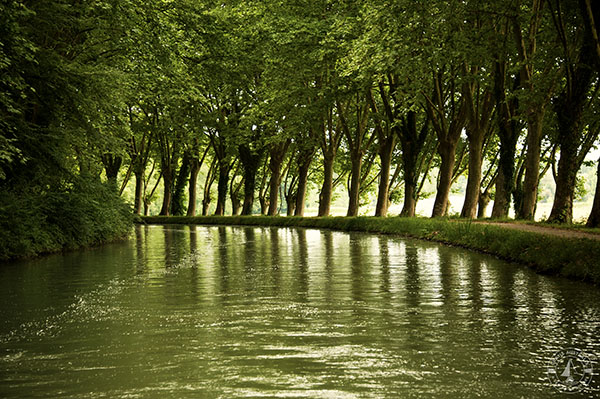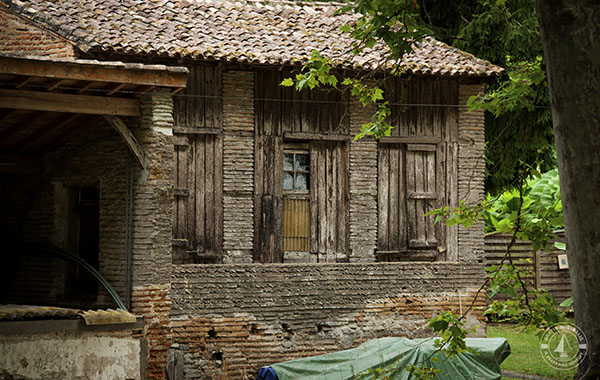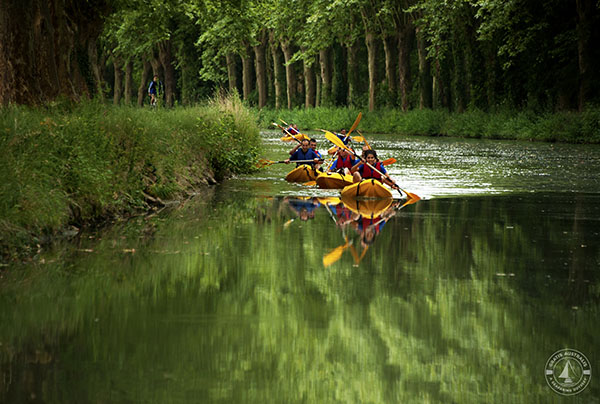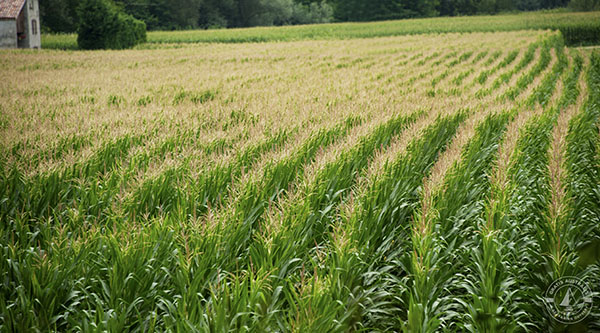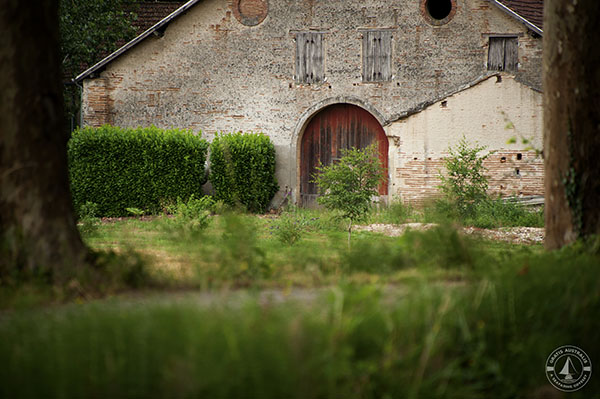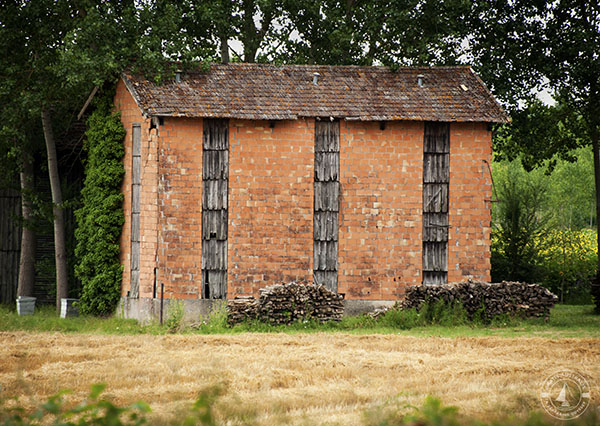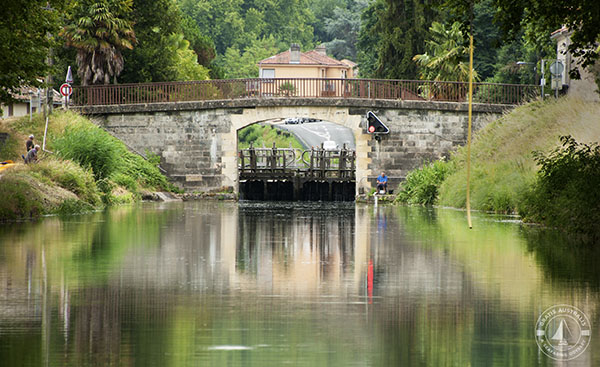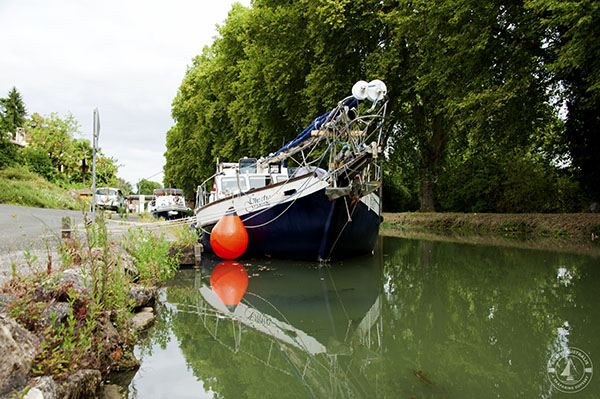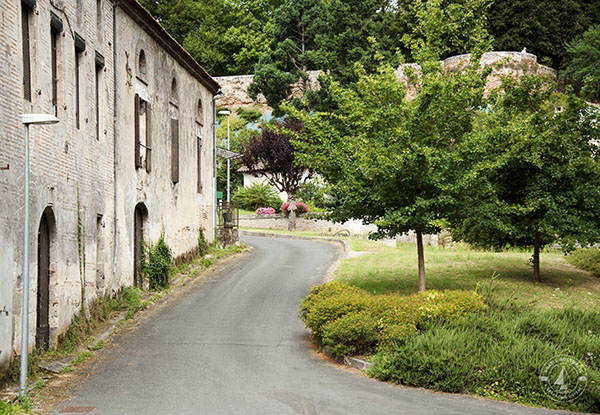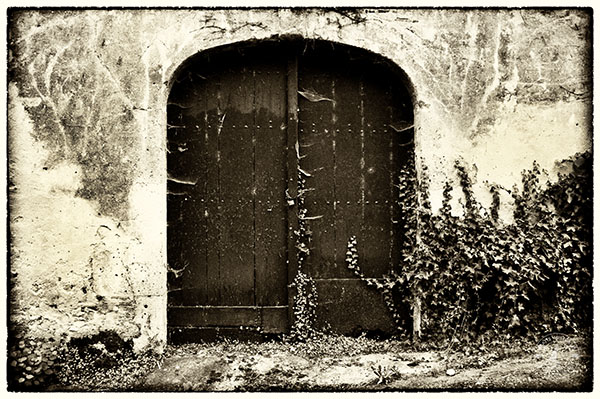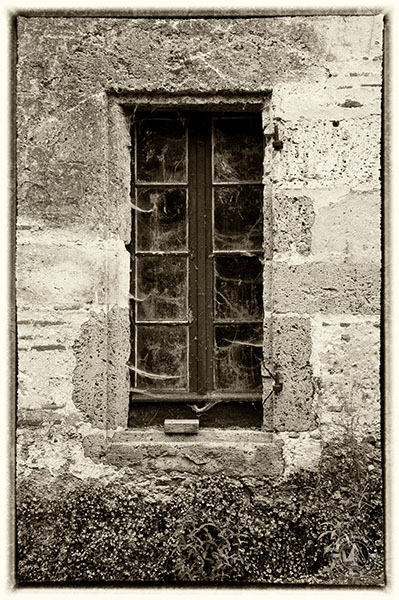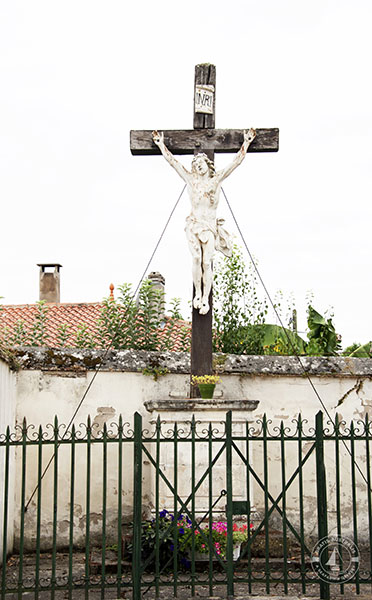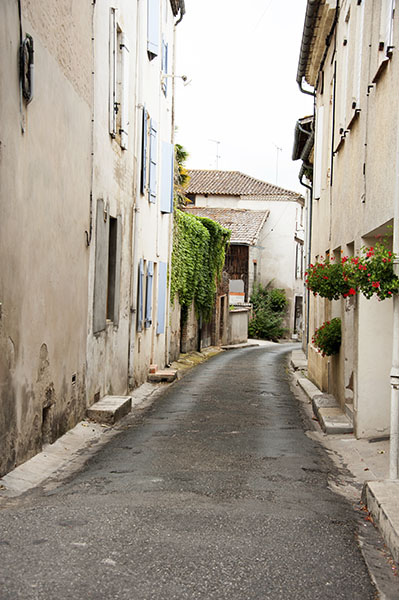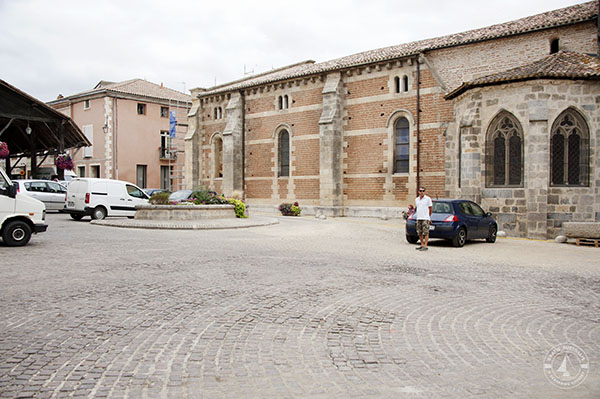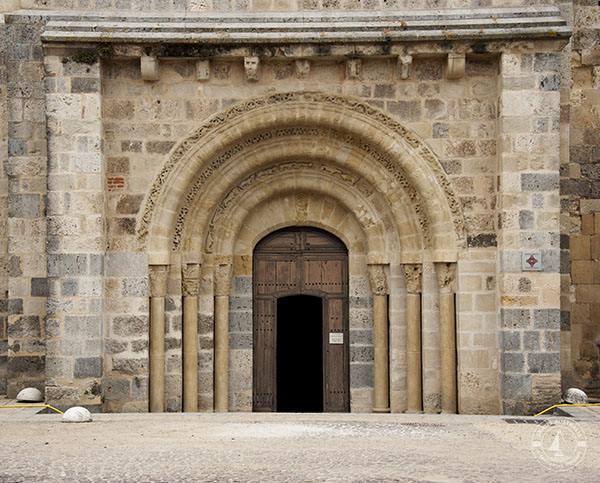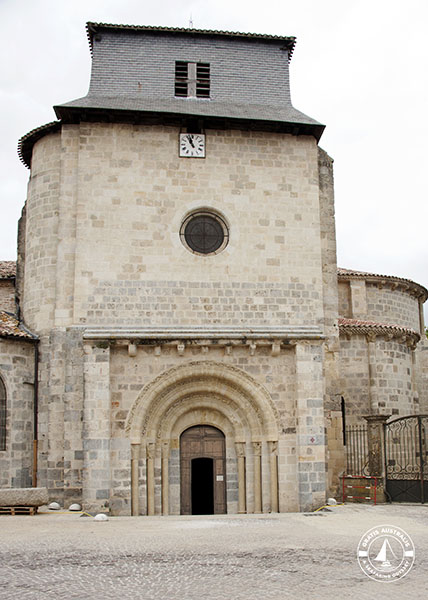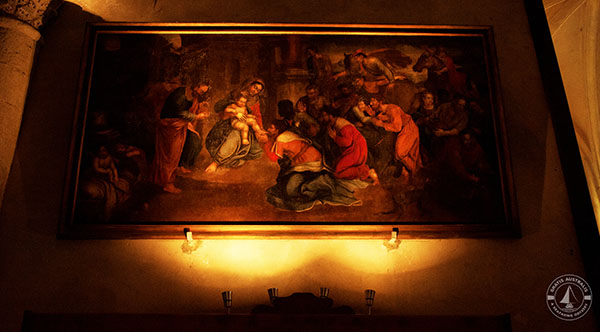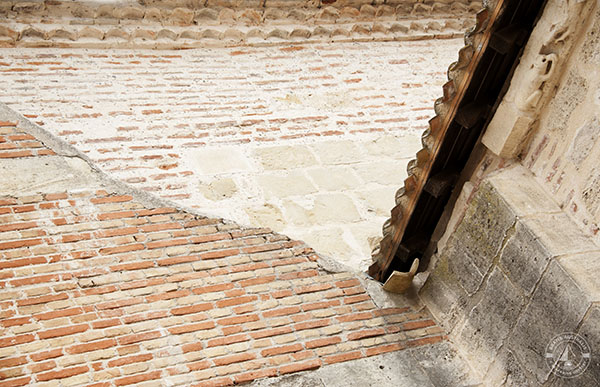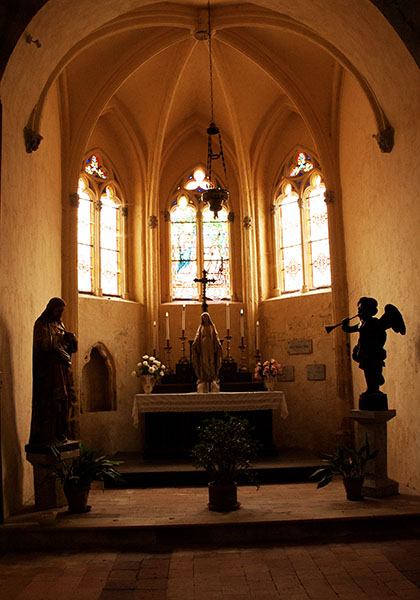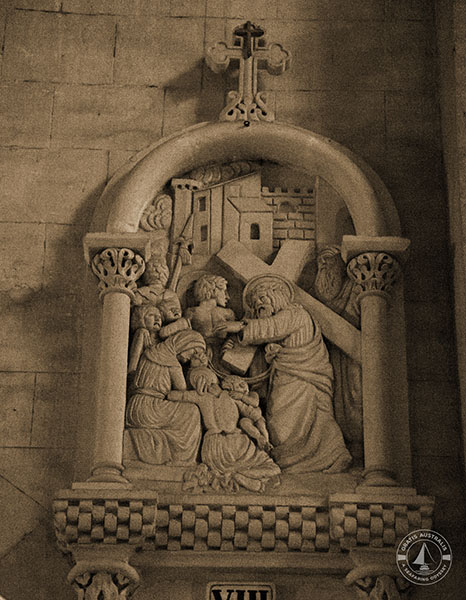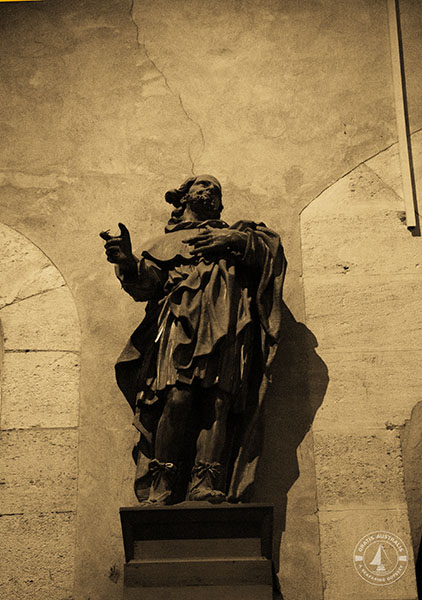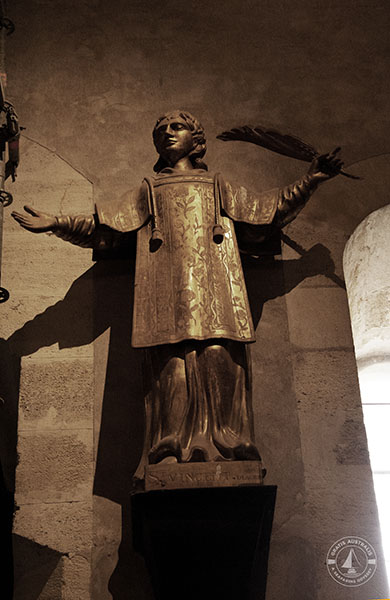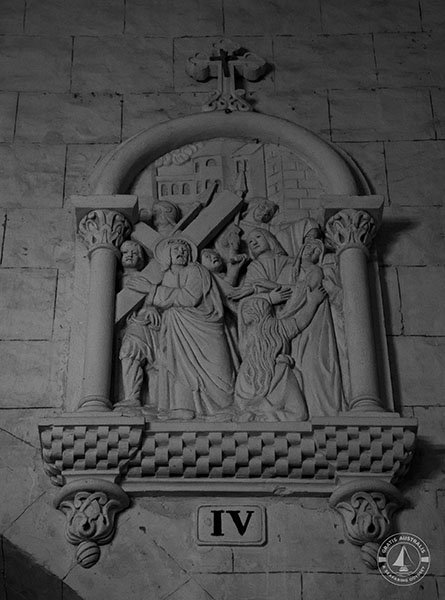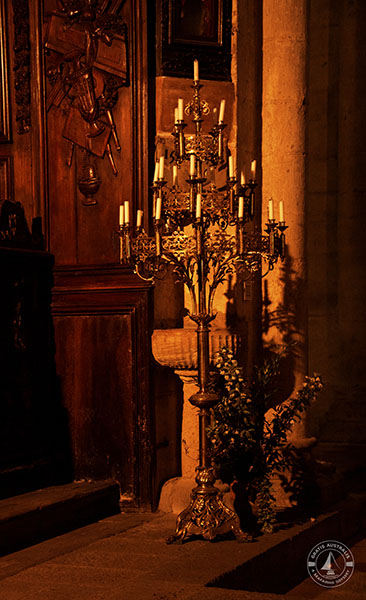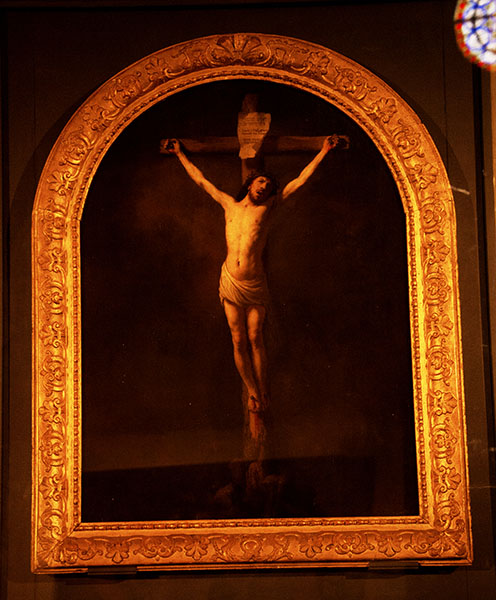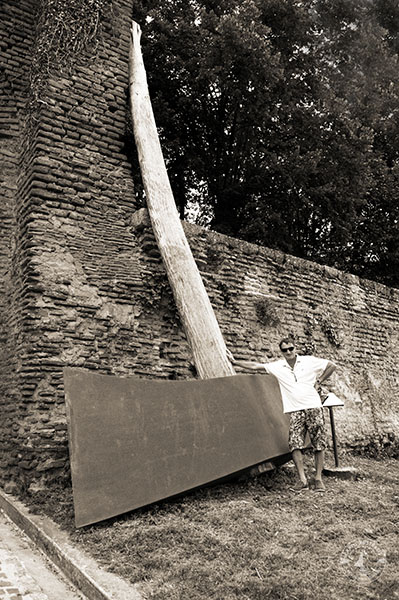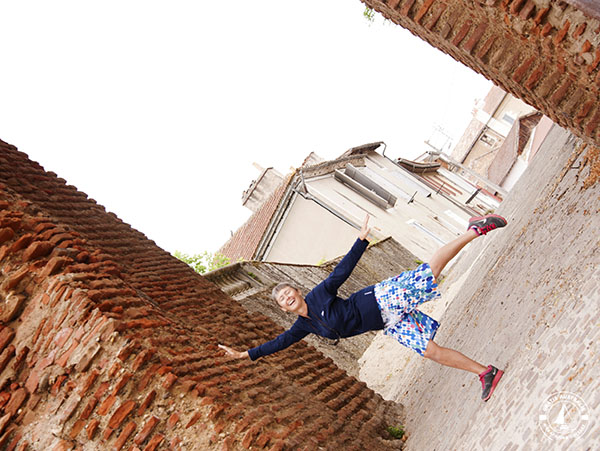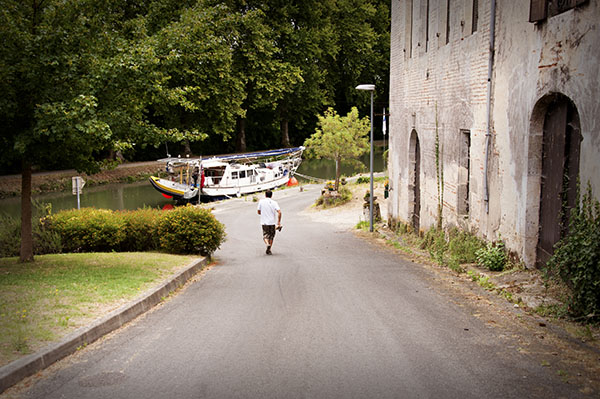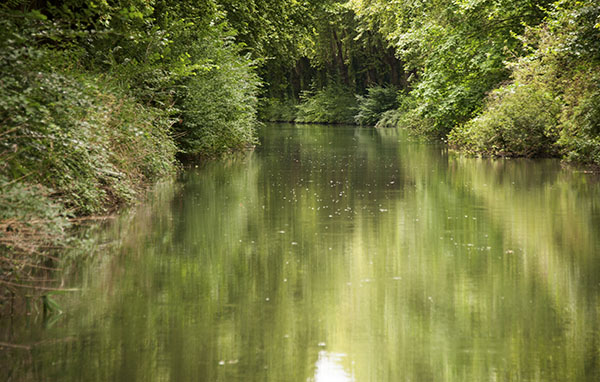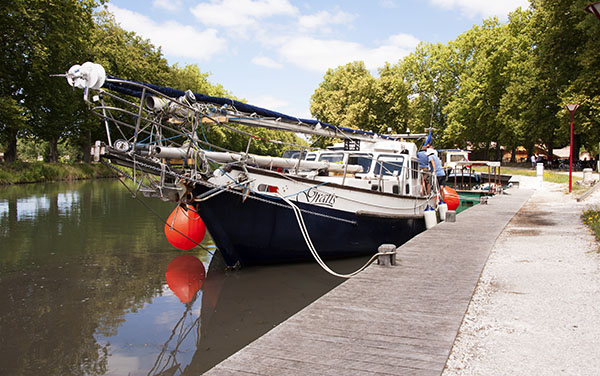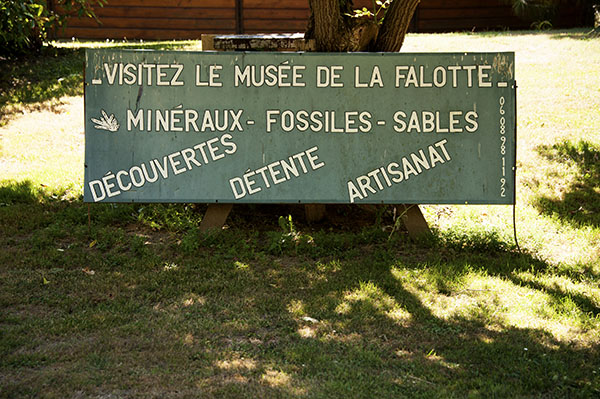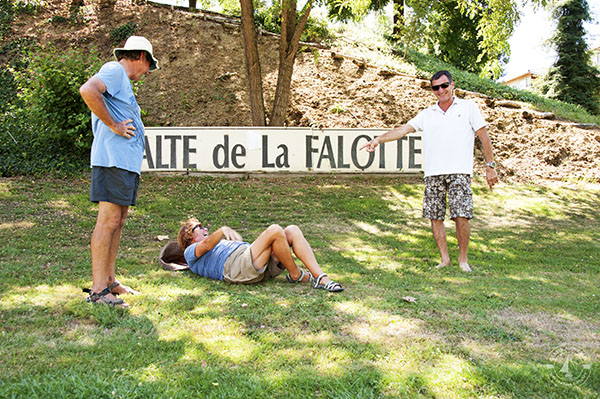A cool overcast morning with a feel of autumn to it, Gratis departed Pont des Sables at 08:00.
At Caumont – sur Garonne – a never ending row of campers in caravans parked upon the canal’s edge, whilst a number of barges moored nearby. Children canoeing brought a vibrant contrast of colours to the green of the water.
It was a rustic atmosphere that encompassed us as we motored along.
And yet more locks came and went.
Le Mas – d’Argenais with in excess of 2000 years of history and one of the oldest villages in the Lot et Garonne region. What a beautiful, quaint town! Once occupied by the Romans its location has moved three times and name changed thrice from Ussubium (after a protective goddess) to Pompejacum and finally Le Mas – d’Agenais in the 11th century.
A small winding road led us from the canal into the township.
Doors and windows told their age.
Past the cross and into the narrow house lined streets we meandered.
The history of the village links back to a legend of Saint Vincent of Agen: a deacon and martyr, he lived his life in the vein of Saint Vincent of Saragossa. It’s believed a cathedral was constructed in the 5th century and with his relics housed there the church became a destination for pilgrims. Sadly, the basilica was destroyed during the Norman invasion. The building of the Romanesque church seen today was commenced in 1085. Fully restored in the nineteenth century, it is once more undergoing massive restoration work to repair the damage caused by damp rising from below.
The slate covered steeple which once adorned the church sadly fell into such dangerous disrepair that it had to be destroyed, and left the church with an unfinished feel.
Two hours were spent here. Take away the vehicles and wires, dress people in attire of old and one would find themselves in times of old. The church St Vincent where a Rembrandt painting – created in 1631 as part of a series (the remainder are to be found in Munich’s Neue Pinakothek) commissioned by the Dutch Prince Frederick Henry, Prince of Orange – Nasau – is housed is an incredible structure constructed over various architectural periods.
The limestone crumbling away as damp rises, a massive effort is currently underway on renovating the building.
Quite a plain structure on the outside, its dominating size was the characteristic used to awe the viewer. Inside, there were none of the frescoes one so often finds, but instead one discovered small figures and plaques carved within the stone and the occasional statue or painting.
Plain wooden pews for the church goers, whilst the priests sat upon plainly carved seating of maybe oak or elm. As on the external structure, the internal too was tastefully done with the artwork not overwhelming the building or viewer.
It wouldn’t have been difficult spending a day wandering the town, exploring all the nooks and crannies. Bright coloured flowers within planters or the smallest of gardens, and bakeries with bread and pastry to die for. We even found fresh home – made biscuits baked without wheat flour – YUM!!!!!
Gate of the Titans upon which leaned the largest axe we’d ever come across.
The town had once been surrounded by a massive brick wall within which were placed five incredibly high gates, of which only the Gate of the Titans remains.
A once beautiful château resided nearby the remaining gate, but allowed to fall into disrepair this building was at last destroyed and its beams used to construct the immense market cover which is covered by a roof of wooden shingles.
On our way once more, landscape of thick jungle appearance created a cooling landscape for the traveller.
Lower bridges saw us missing by only an inch or two and occasionally the water would shallow to such an extent in the approach to the locks that Gratis hit bottom for a split second of time.
The township of Villeton houses the Musee de la Memoire Paysanne (peasant museum), which we missed since it is only open between 1000 and 1400: from the pictures it looked quite interesting. An excellent mooring pontoon with power, water, and restaurant: depth was shallow enough that Gratis lightly grounded.
Fun for the day was found at la Falotte – or Laughalot as the guys decided. Here we had a quick break whilst they stood – or lay – in front of the township’s mooring where there was a mowed grassy area great for picnics and laughed a lot. A small museum on rocks, mineral and fossils was only metres away.
Damazan, where Fontain aux Anglais, an old English washing area for clothes, is to be found (yes, the English actually ruled this ancient fortified town for some time in the far past). The remains of old Moorings aplenty, but all in use, and no suitable mooring area just past it meant we missed alighting this afternoon. Instead, we motored a further 4km on to Buzet – sur – Baise.
This small country town also had a mooring area, where at 18:16 Bob at last edged Gratis into the remaining mooring. Wild dense bush lined the edges of the canal, a stark contrast to the manicured rows of flame trees behind which crops of corn, sunflowers and wheat were cultivated. A peaceful, and relaxing setting, we settled in for the night.
